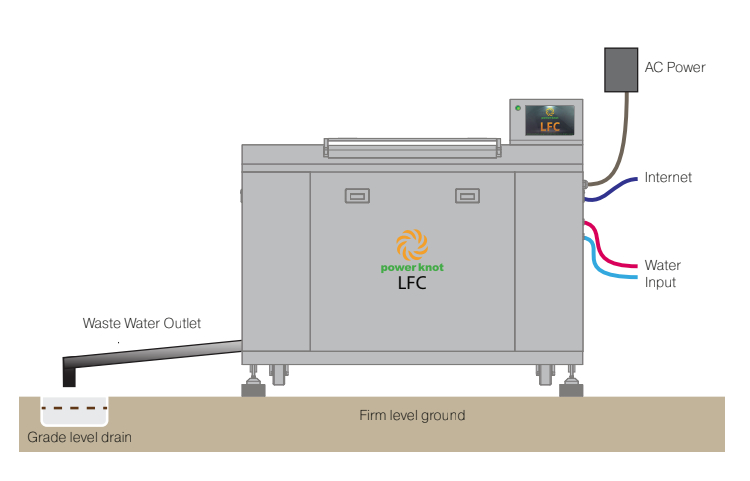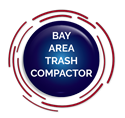
How to Start a Zero Waste Business
If you have been pondering how to start a zero waste business or convert your existing business to zero waste, you have come to the right place.
Starting a zero-waste business can seem daunting, but it’s not as difficult as you think. Many companies have already made the switch and seen significant results. The key is to take a holistic approach to waste management and diversion, which means looking at your entire business and waste stream, identifying which materials can be composted or recycled, and adjusting landfill material to compostable or recyclable alternatives.
Take a 30,000 Foot View of Your Business and Waste Stream
A “30,000-foot view” of a business is a common phrase to describe getting to a high enough level to see the big picture. Reaching this perspective means taking a step back from the day-to-day operations of your business and looking at the entire waste stream. At this higher level, businesses can expand their viewpoint to understand how the core foundational elements of their business fit together and provide exceptional value to customers while also considering their business’s impact on the environment. Conducting a waste audit will help you identify where your waste is coming from and the steps you need to take to get closer to zero waste.
>>Need Sustainability Expertise? Call for a Consultation<<
Tackle Waste Diversion
Waste diversion – diverting waste from landfills and into other disposal or reuse options – is your golden ticket to achieving zero waste in your business.
Cardboard
Recyclable cardboard accounts for a large percentage of waste generated by businesses, but it’s also one of the most accessible recycling materials. Since cardboard usually comes from one or two areas in a business, it is easy to collect, bale, and recycle with any of our next-generation balers.
For every ton of flattened cardboard that your company recycles, you will save forty cubic yards of landfill space—or 60 to 80 cubic yards loose per trailer load. That’s space that would otherwise be taken up in your local landfills unnecessarily while the cardboard takes decades to break down.
In the meantime, you will also see benefits for your business in reducing recycling costs. You may even be able to earn revenue from recycled bales of cardboard if your municipality offers recycling programs that pay companies for recyclable materials. Otherwise, try BoxCycle or UsedCardboardBoxes.com. Additionally, Bay Area Trash Compactor has many partners to pick up bales including Gief, Superlink, and International Paper.
Plastics
Plastics come in many different forms, and not all can be recycled. However, the most common type of plastic—PET or PETE (polyethylene terephthalate)—can be recycled into new bottles and containers. To recycle plastics, first check with your local recycling program to see what types of plastics they accept.
For example, shrinkwrap is voluminous but highly compactable at ratios up to 25:1. If shrinkwrap or blue wrap is clean, the material has a value of up to 3 cents per pound and can be recycled. If it is not clean, it can still be baled to reduce the volume going to the landfill. Try our smart approach small footprint Bramidan B5 Baler or Bramidan B6030 Baler, which can handle high volumes of cardboard and shrink wrap.
You can also reduce the amount of plastic waste your business generates by switching to reusable or compostable alternatives. For example, many Bay Area businesses have switched from plastic packaging insulation to recyclable/compostable paper. Many restaurants have switched from plastic straws and tableware to paper straws and tableware or reusable metal straws.
Compost
Identify the traditional materials that are new to compost – hand towels from bathrooms, coffee cups, paper plates, pizza boxes, and other items that used to be thought of as trash are now compostable. Those materials are highly compactable and can be baled or compacted using the right equipment.
Then, look at back-of-the-house food waste. Prep food waste is easy to separate and capture. Then you can use a dehydrator, like our Gaia Food Waste Dryer, or a food composter like our Harp Accelerated Bio-Digester to reduce volume and close the loop by distributing the dehydrated material into the garden. The only other output is steam or distilled water, which companies can use for golf carts, forklift batteries, and more.
Then, there is post-consumer compost, such as bussed waste from the dining room and public area waste. This waste can also be captured, compacted, and then composted at the municipal facility.
Other Recyclables
Many other materials such as glass, aluminum cans, office paper, toner cartridges, bottles, styrofoam, and plastic jugs can be easily captured and recycled.
For example, styrofoam – EPE and EPS – can be densified 20:1 compaction and recycled or sold. Our Runi SK200 Styrofoam Densifier compacts EPS at a ratio of up to 50:1. Without compaction, a company would need 50 trucks to take the loose EPS to the landfill. After compaction, just one truck is enough to transport the densified styrofoam blocks to the EPS recycling facility.
Implement Waste and Recycling Signage
A crucial step in getting your business to zero waste is to make sure that you have proper signage for all of your waste and recycling bins. Clear and appropriate signage will help ensure that materials are being properly sorted at the source and will also help to educate your employees and customers about your zero waste efforts. Make sure to place signs next to all waste and recycling bins and other waste-generating areas, such as kitchens, break rooms, and copy machines.
Shift Purchasing to Recyclable or Compostable Alternatives
One of the best ways to reduce waste in your business is to shift your purchasing practices to favor recyclable or compostable alternatives rather than materials that will end up in a landfill.
For example, if you typically purchase paper towels for your restroom, consider switching to a hand air dryer. Or, if you usually serve coffee in disposable cups, switch to compostable cups or washable and reusable mugs. You can also reduce packaging waste by purchasing in bulk or avoiding individually wrapped items.
By making a few simple changes to your purchasing practices, you can impact the amount of waste your business generates.
Continue to Educate About Your Zero Waste Efforts
Once you’ve changed how your business generates and manages waste, educating your employees and customers about your efforts is essential. Continued education will help ensure that everyone is on board with your zero waste goals and knows how they can play a role in achieving them.
There are many ways to educate employees and customers about your zero waste efforts. You can post signs in critical areas, such as near waste and recycling bins, or send out emails or newsletters. You can also hold informational meetings, trainings, or even host events to celebrate your progress.
By educating those who interact with your business, you can help ensure that your zero waste efforts are successful.
Start Your Zero Waste Journey Today!
Getting your business to zero waste is a journey, but it’s one that is well worth taking. By following these tips, you can start making your business more sustainable and less reliant on disposables, which is beneficial to your company and the Earth!
We hope that this blog about how to start a zero waste business has been helpful to you. Give us a call at (833) 562-0665 or shoot us an email at [email protected] to learn even more about how our products can help with your business’s sustainability efforts.
